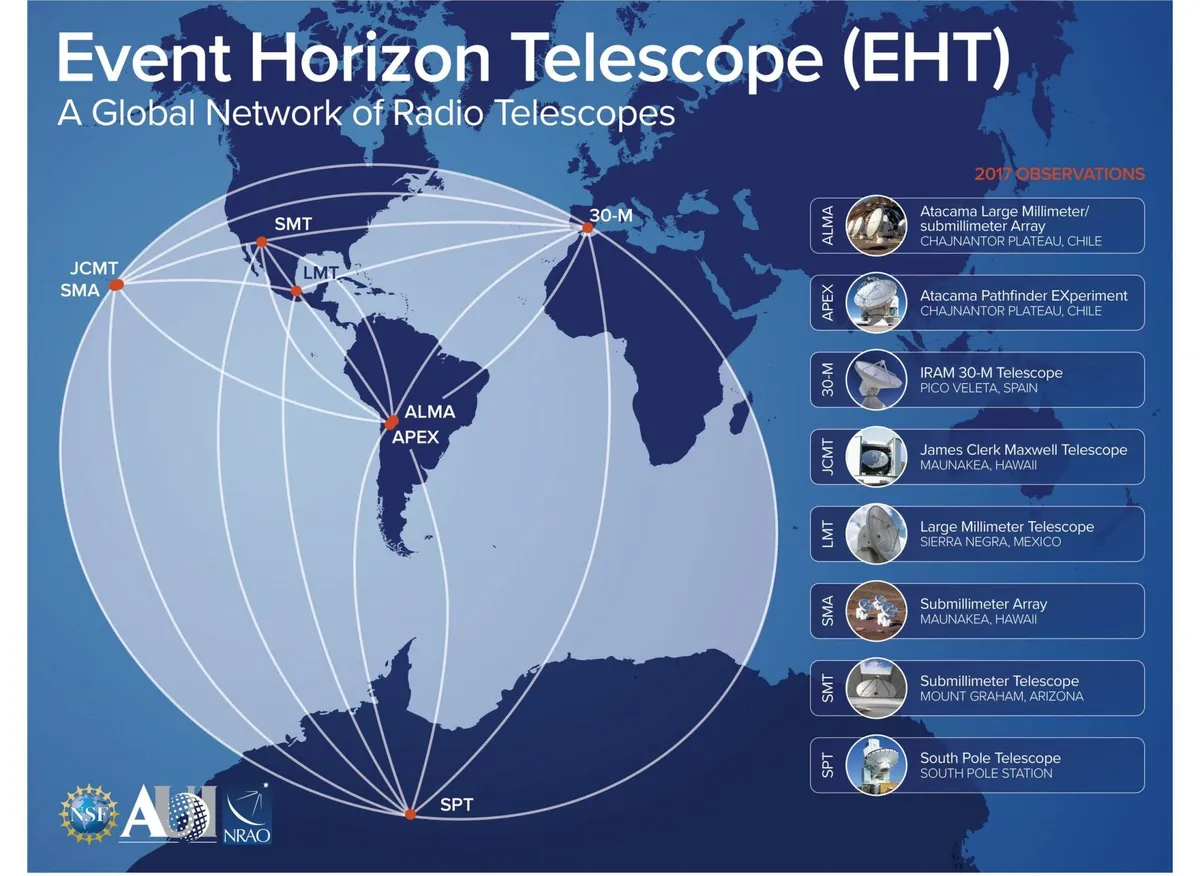Astronomers have captured an image of a powerful cosmic jet streaming from the supermassive black hole at the heart of a galaxy.The image was produced by the Event Horizon Telescope Collaboration, which was responsible for the first ever image of a supermassive black hole, released in April 2019.
Black holes are generally considered to be the vacuum cleaners of the Universe, sucking up everything in their path due to powerful gravitational pulls from which not even light can escape, but this is not all they do.
Read more about supermassive black holes:
- Supermassive black hole imaged for the first time
- Chandra spies the supermassive black hole at the centre of our Galaxy
- Supermassive black hole aids star formation in the Phoenix Cluster
They are also known to fire out jets of plasma, which are ejected into space at nearly the speed of light and transfer mammoth amounts of matter and energy into the cosmos.
However, astronomers are still not exactly sure of the precise composition of these jets or how they operate.
The newly-imaged jet was spotted emanating from a quasar at the centre of galaxy 3C 279, which lies 5 billion lightyears away in the Virgo constellation.
Quasars are the luminous centres of galaxies, shining brightly as a result of the energy generated as cosmic matter falls into the supermassive black holes at their centre.
To put things in perspective, 3C 279’s supermassive black hole is about 1 billion times the mass of the Sun.
Our own galaxy, the Milky Way, also has a supermassive black hole at its centre - as do most known galaxies - but it too is dwarfed by 3C 279’s by about 200 times. We don't yet definitively know where the nearest black hole to Earth is.
“Jets are extremely coherent and powerful structures, and despite being a common feature of active black holes across the Universe, we still don’t understand how they form and launch huge amounts of energy away from their host galaxy,” says Dr Ziri Younsi, an astronomer at the University College London Space & Climate Physics department, and a co-author of the study.
“This discovery is important as it is the first time we have seen how a relativistic jets couples to the accretion disk around a black hole, as well as its spatial and dynamical structure in incredibly high detail.”
The team made the discovery using the Event Horizon Telescope, which is a collaboration of some of the biggest and best telescopes on the planet.

Simultaneous observations with individual telescopes in collaboration effectively produce one huge telescope with an aperture about the size of Earth.
Data collected by the telescopes is then transferred to and processed by dedicated computers hosted at the Max Planck Institute for Radio Astronomy (MPIfR) and the Haystack Observatory at the Massachusetts Institute of Technology.
"Last year we could present the first image of the shadow of a black hole. Now we see unexpected changes in the shape of the jet in 3C 279, and we are not done yet,” says Professor Anton Zensus, Director at the MPIfR and Chair of the EHT Collaboration Board.
“We are working on the analysis of data from the centre of our Galaxy in Sgr A*, and on other active galaxies such as Centaurus A, OJ 287, and NGC 1052. As we said last year: this is just the beginning."
For more info, visit UCL's dedicated news section.
